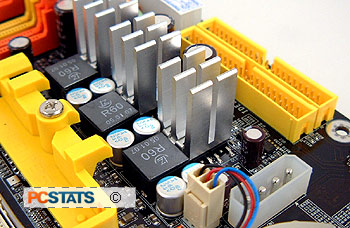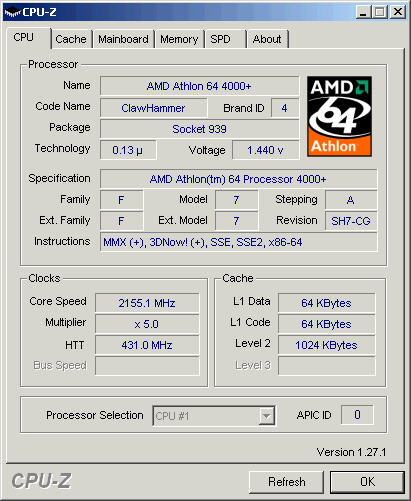 There's little doubt that the LANParty
NF4 SLI-DR was built with overclocking in mind. MOSFETs generally do not need
additional cooling yet this board has five large aluminum heatsinks set onto
them for additional cooling.
There's little doubt that the LANParty
NF4 SLI-DR was built with overclocking in mind. MOSFETs generally do not need
additional cooling yet this board has five large aluminum heatsinks set onto
them for additional cooling.
Last but
not least, look at the BIOS voltage options on the next page; they're the
highest we've ever seen. Even when hardcore overclockers voltage mod their
motherboards, they often use values lower than those the LANParty NF4 SLI-DR
offers at stock!
With all
of the above in mind, we did expect some heavy overclocking from this
motherboard, so let's get into that now.
Overclocking with DFI
Before we
started, we first lowered the processor multiplier to 8x and set the memory to
run in 133 MHz mode. Starting at 200 MHz I overclocked like an impatient
enthusiast, jumping in 10 MHz intervals (kids, don't do this at
home!).
The
LANParty NF4 SLI-DR seemed to love overclocking and met my challenge head on.
With everything at stock voltage we broke the 300
MHz barrier without any problems! You could say that we were
impressed... Continuing on, we ran into a few problems at 320MHz and had to
raise the chipset voltage to 1.7V to stabilize it. We also lowered the CPU clock
multiplier further to 5x. I don't understand why other sites test motherboard
overclocking while keeping a high multiplier. We're supposed to be testing the
motherboard right?
We ran
into our second snag at 362 MHz; here the memory was starting to flake out and
the system would crash back to desktop when running 3D benchmarks. Using the
lowest memory setting (1:2) solved this problem. We were then able to pass the
400 MHz mark very easily!
In the
end the motherboard topped out at 431 MHz. I have a feeling it could have gone
higher if we perhaps had better cooling on the NF4-SLI chipset. The heatsink
temperature was around 50 degrees Celsius according to a Fluke 54-II
thermometer, which is way too hot.

Simply amazing isn't it? Just
for fun, I fed some TwinMOS SpeedPremium PC3200 DDR RAM modules 3.8V to see how
high they could go at 2-2-2-5, and they reached 294 MHz at 1:1! See, voltage
does help out!
